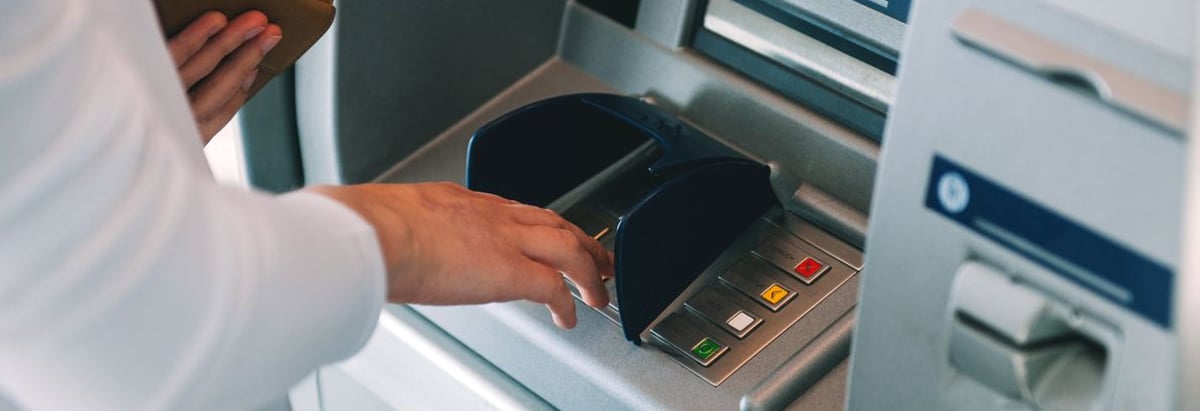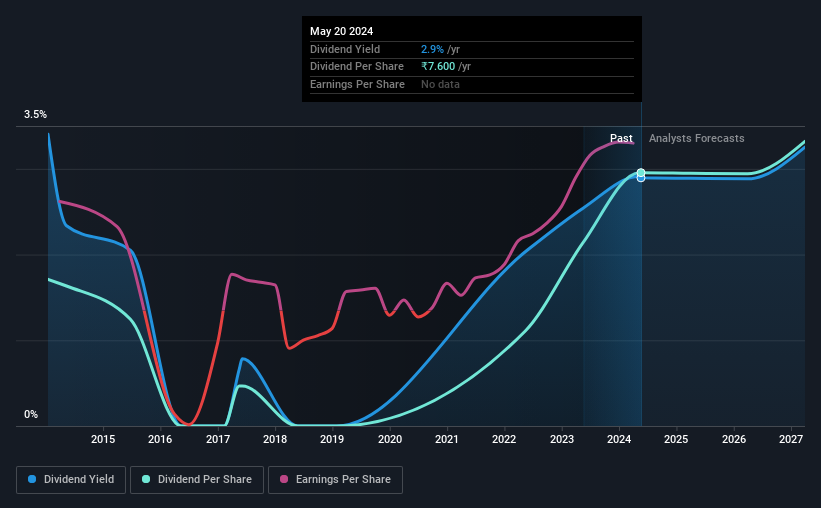Bank of Baroda's (NSE:BANKBARODA) Dividend Will Be Increased To ₹7.60

Bank of Baroda Limited (NSE:BANKBARODA) will increase its dividend from last year's comparable payment on the 4th of August to ₹7.60. This will take the dividend yield to an attractive 2.9%, providing a nice boost to shareholder returns.
View our latest analysis for Bank of Baroda
Bank of Baroda's Payment Expected To Have Solid Earnings Coverage
A big dividend yield for a few years doesn't mean much if it can't be sustained.
Bank of Baroda has a long history of paying out dividends, with its current track record at a minimum of 10 years. While past records don't necessarily translate into future results, the company's payout ratio of 21% also shows that Bank of Baroda is able to comfortably pay dividends.
Over the next 3 years, EPS is forecast to expand by 17.0%. The future payout ratio could be 20% over that time period, according to analyst estimates, which is a good look for the future of the dividend.

Dividend Volatility
Although the company has a long dividend history, it has been cut at least once in the last 10 years. Since 2014, the annual payment back then was ₹4.40, compared to the most recent full-year payment of ₹7.60. This works out to be a compound annual growth rate (CAGR) of approximately 5.6% a year over that time. It's good to see the dividend growing at a decent rate, but the dividend has been cut at least once in the past. Bank of Baroda might have put its house in order since then, but we remain cautious.
The Dividend Looks Likely To Grow
Growing earnings per share could be a mitigating factor when considering the past fluctuations in the dividend. Bank of Baroda has impressed us by growing EPS at 54% per year over the past five years. Earnings per share is growing at a solid clip, and the payout ratio is low which we think is an ideal combination in a dividend stock as the company can quite easily raise the dividend in the future.
We Really Like Bank of Baroda's Dividend
In summary, it is always positive to see the dividend being increased, and we are particularly pleased with its overall sustainability. Distributions are quite easily covered by earnings, which are also being converted to cash flows. All of these factors considered, we think this has solid potential as a dividend stock.
Companies possessing a stable dividend policy will likely enjoy greater investor interest than those suffering from a more inconsistent approach. Meanwhile, despite the importance of dividend payments, they are not the only factors our readers should know when assessing a company. For example, we've picked out 1 warning sign for Bank of Baroda that investors should know about before committing capital to this stock. If you are a dividend investor, you might also want to look at our curated list of high yield dividend stocks.
Valuation is complex, but we're here to simplify it.
Discover if Bank of Baroda might be undervalued or overvalued with our detailed analysis, featuring fair value estimates, potential risks, dividends, insider trades, and its financial condition.
Access Free AnalysisHave feedback on this article? Concerned about the content? Get in touch with us directly. Alternatively, email editorial-team (at) simplywallst.com.
This article by Simply Wall St is general in nature. We provide commentary based on historical data and analyst forecasts only using an unbiased methodology and our articles are not intended to be financial advice. It does not constitute a recommendation to buy or sell any stock, and does not take account of your objectives, or your financial situation. We aim to bring you long-term focused analysis driven by fundamental data. Note that our analysis may not factor in the latest price-sensitive company announcements or qualitative material. Simply Wall St has no position in any stocks mentioned.
About NSEI:BANKBARODA
Bank of Baroda
Provides various banking products and services to individuals, government departments, and corporate customers in India and internationally.
Very undervalued established dividend payer.
Similar Companies
Market Insights
Community Narratives



